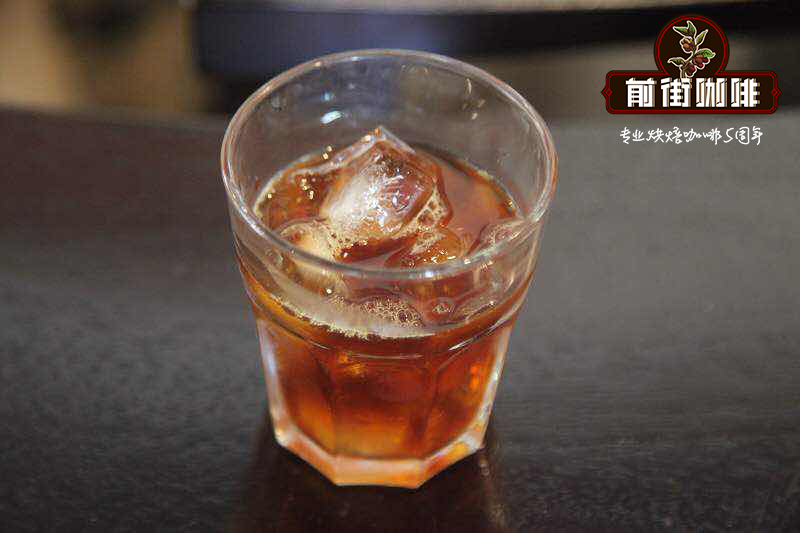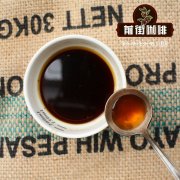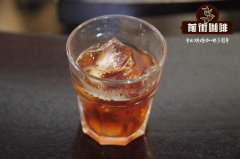Cote d'Ivoire Coffee Cote d'Ivoire Coffee How about Cote d'Ivoire Coffee Bean Flavor

Professional coffee knowledge exchange more coffee bean information please follow the coffee workshop (Wechat official account cafe_style)
In terms of quantity, it is one of the largest producers in the world.
C ô te d'Ivoire (C ô te d'Ivoire) has never produced the best quality coffee and rarely produced coffee from Arabian coffee trees. In the early 1980s, it was the world's third-largest coffee producer, with an annual output of 5 million bags. Even today, it is still the fifth largest coffee producer in the world, with an annual output of 4.4 million bags. In terms of coffee production, C ô te d'Ivoire is second only to Indonesia (6.8 million bags per year).
In the 1980s Ivorian coffee produced only 250 kilograms per hectare. This is partly due to poverty, but also to the aging of coffee trees. Lack of investment and lack of long-term business plans have also affected coffee production.
The Government of C ô te d'Ivoire has begun to take positive measures to reverse the situation. The National Coffee Management Committee has been reorganized and streamlined, and some production activities have been transferred to private companies for management. The government provides a minimum price guarantee to farmers who produce high-quality coffee and encourages exporters to buy directly from farmers. Today, 80% of exported coffee has found a market in European Community countries, with the main buyers being France and Italy.
It is worth noting that C ô te d'Ivoire is the main centre of coffee smuggling, with up to 2600 tons of coffee smuggled between 1993 and 1994, mainly through the neighbouring countries of Mali (Mali) and Guinea (Guinea).
C ô te d'Ivoire has never produced the best quality coffee, and it rarely comes from Arabica coffee trees.
However, since Ivorian-born coffee is mostly robusta coffee, it does not help it to become the origin of special coffee. Because of its special taste and characteristics, this kind of coffee is mostly used in mixed instant coffee or canned coffee, rarely drunk directly as a single product, full-bodied and soft.
C ô te d'Ivoire 's coffee industry was introduced by French colonists in the 19th century, [4] and its coffee production increased from 36000 metric tons in 1945 after the second World War to 112500 metric tons in 1958. [5] this number continued to rise after independence in 1960 and peaked in the 1970s, making C ô te d'Ivoire the world's third-largest coffee exporter after Brazil and Colombia at that time. But then the civil war in C ô te d'Ivoire destabilized coffee cultivation. [1] on the other hand, the local coffee production processes and policies developed during the colonial period of French West Africa have attracted many French companies to invest and participate in the coffee production industry in C ô te d'Ivoire. [6]
Output
C ô te d'Ivoire mainly produces robastian coffee (Robusta coffee); [7] the following is the annual output of raw coffee beans (that is, unroasted) recorded by the Food and Agriculture Organization of the United Nations Joint Statistical Database (Food and Agriculture Organization Corporate Statistical Database) of the Food and Agriculture Organization of the United Nations
Important Notice :
前街咖啡 FrontStreet Coffee has moved to new addredd:
FrontStreet Coffee Address: 315,Donghua East Road,GuangZhou
Tel:020 38364473
- Prev

How about Cameroon Coffee? Cameroon Java long beans
Professional coffee knowledge exchange more coffee bean information please pay attention to the coffee workshop (Wechat official account cafe_style) Cameroon has the soil, climate, topography and other characteristics, suitable for the growth of a variety of crops. The main crops are coffee, cocoa, cotton and other cash crops and millet, sorghum, corn and other food crops. Cameroon is rich in Rob Coffee Raw beans. A rich volcano
- Next

Yega Chuefei Erica Coffee aricha Coffee Sunshine Erica Flavor
Professional coffee knowledge exchange more information about coffee beans please follow the coffee workshop (Wechat official account cafe_style) ARICHA KEBELE Aricha is named after Aricha kebele from the Yegashafi producing area of Ethiopia. To the east of Yirgacheffe, there is a village called Aricha kebele, which is about Aricha from the center of the town.
Related
- Detailed explanation of Jadeite planting Land in Panamanian Jadeite Manor introduction to the grading system of Jadeite competitive bidding, Red bid, Green bid and Rose Summer
- Story of Coffee planting in Brenka region of Costa Rica Stonehenge Manor anaerobic heavy honey treatment of flavor mouth
- What's on the barrel of Blue Mountain Coffee beans?
- Can American coffee also pull flowers? How to use hot American style to pull out a good-looking pattern?
- Can you make a cold extract with coffee beans? What is the right proportion for cold-extracted coffee formula?
- Indonesian PWN Gold Mandrine Coffee Origin Features Flavor How to Chong? Mandolin coffee is American.
- A brief introduction to the flavor characteristics of Brazilian yellow bourbon coffee beans
- What is the effect of different water quality on the flavor of cold-extracted coffee? What kind of water is best for brewing coffee?
- Why do you think of Rose Summer whenever you mention Panamanian coffee?
- Introduction to the characteristics of authentic blue mountain coffee bean producing areas? What is the CIB Coffee Authority in Jamaica?

